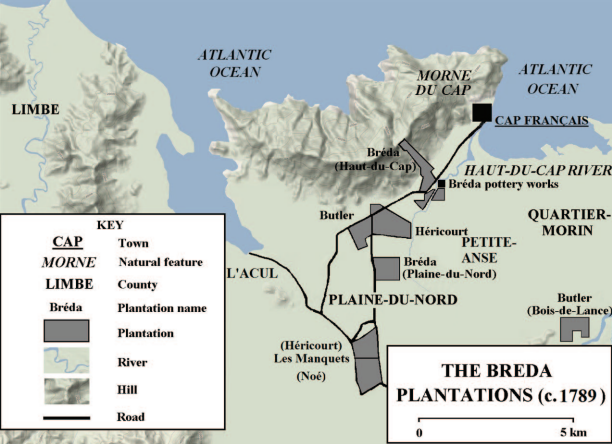
Summary
–The world in which Louverture, Toussaint lived as a slave was that of the large sugar plantations of the northern plain of Cap Français, one of the most intensive concentrations of capital in the Western world.
More…
The Bréda estate in Haut-du-Cap employed more than 150 slaves, another in Plaine-du-Nord employed 200, and the comte de Noé’s Manquets plantation 400. But financial records show that these plantations, among the largest in a colony known as the perle des Antilles (pearl of the Antilles), were struggling financially. Short on cash, the Bréda family mortgaged the plantations’ entire production to Bordeaux merchants, who in practice were the true beneficiaries of the Bréda slaves’ labor.
More…
Their case was not unique. White planters of Saint Domingue, who have a reputation as fabulously wealthy individuals, were often deeply indebted to European merchants (as was true of North American planters as well), which calls into question many of historians’ assumptions about the overall profitability of the plantation system



